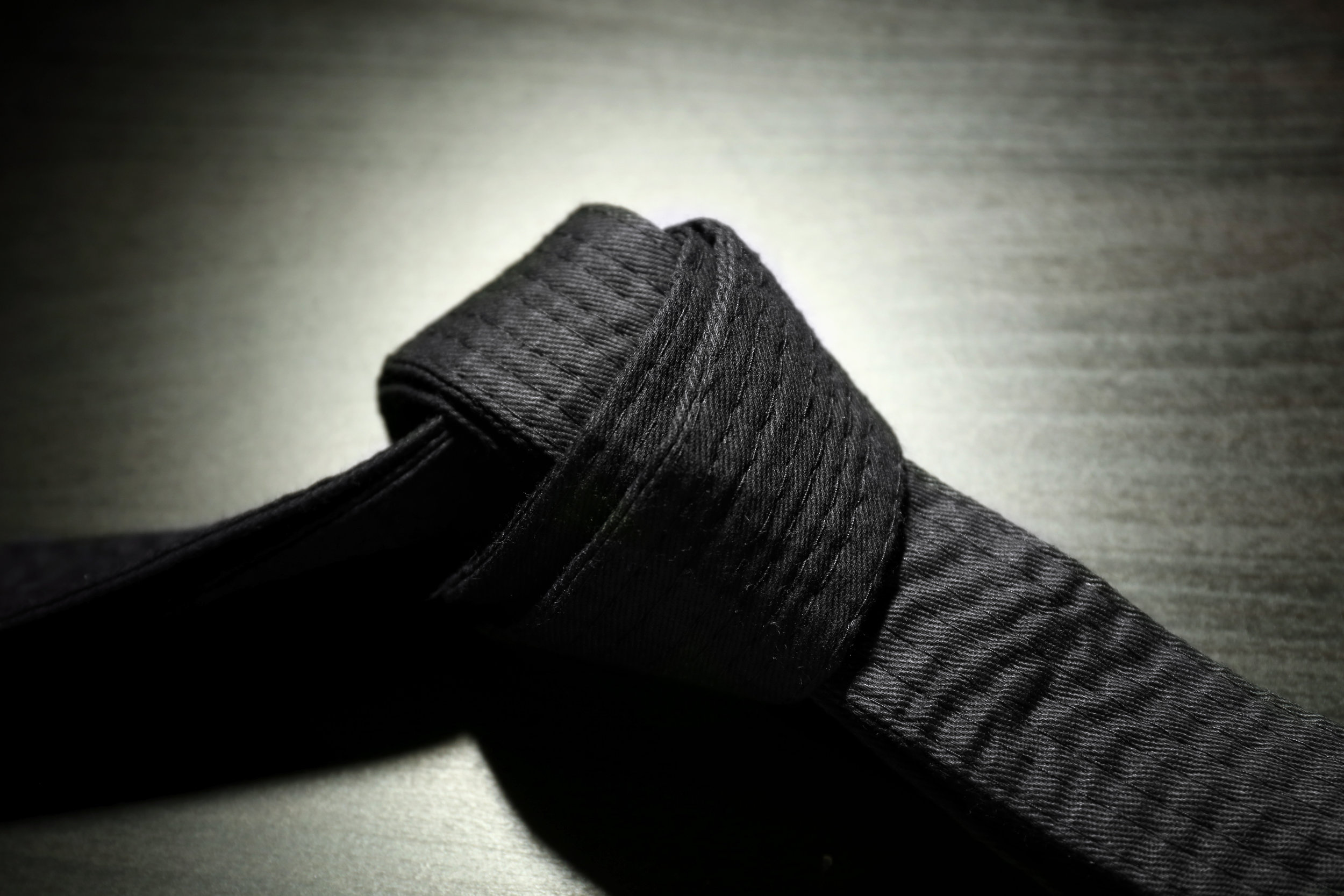ISRAELI KRAV MAGA: BLACK BELT
In 1995, Emrich "Imi" Lichtenfeld entrusted Grandmaster Haim Gidon with overseeing black belt examinations. The Israeli Krav Maga Association (IKMA) usually requires a minimum of ten concentrated years of study or more to test for a 1st dan (blackbelt). All blackbelt exams must be taken in Israel. Three senior blackbelts (3rd dan or higher) must administer the test for 1st dan.
Recently, I had the opportunity to discuss with Grandmaster Gidon how blackbelt tests have changed since Imi first instituted the belt system. Currently, and, as the system continues to evolve under Grandmaster Gidon, blackbelt examinations involve more material than they did in the 1980's and 1990's. The knowledge base is also probed more intensely. Retzev is also used against retzev -- hand-to-hand combat at the highest levels. Each successive dan (1st-3rd) is usually separated by five years of additional learning/training and, usually, teaching experience. Six to seven years of additional experience is required to test for 4th dan.
To provide an idea of the depth of knowledge and required experience tested, the IKMA's current curriculum for 1st dan is seven (single spaced) pages of techniques including 47 topics. Within these topics, there are 114 techniques and variations. For 2nd dan, the curriculum is nine (single spaced) pages and 52 topics. Within these topics are 217 techniques and variations. Also note that stick vs. stick, knife vs. knife, stick vs. knife include Imi's original defenses along with additional defenses against professionally trained stick and knife fighters. There also specific cold weapon techniques to defend agains takedown/groundfighting experts. A minimum of three examiners including a 4th dan and at least two 5th dans (or higher) must be present for a 2nd dan examination.
For 3rd dan, the curriculum is another seven (single spaced) pages with 15 topics and 57 techinques and variations. I'll mention just a few 3rd dan topics including lethal force applications (military/security establishment), defenses against military/lethal force applications, advanced law enforcement team work, VIP protection, defending against animal attacks, advanced vehicular confrontation scenarios, and room entry and clearing. For 3rd dan, there must be at least three 5th dan examiners.
For 4th dan, the curriculum focuses on advanced military and security applications such as urban warfare and fighting in and under water. For 5th dan, the highest level specific government/security applications are taught. Grandmaster Gidon grants 4th dan and higher directly overseeing the examination. Teaching development is also emphasized such as running instructor courses and testing 2nd and 3rd blackbelt dans. Notably, 4th and 5th dans in the IKMA (Gidon System) are based on skill, technique, and knowledge -- capabilities within the system -- not "political patronage."
Indeed, the maxim "less is more" is absolutely true in a self-defense situation, especially, when caught unprepared or in the "negative five" position. In reality, one needs to know just a few core techniques very well along with the the capability to execute these defensive movements instinctively and seamlessly while adapting to the threat.
I am a proponent of doing a few things very well. Israeli krav maga is meant to be simple; instinctive gross motor movements will carry the day. However, my point from the IKMA perspective is that a blackbelt represents the beginning of true mastery of the system starting with a flawless knowledge of the basic combatives/defensive tactics through the expert level. The IKMA higher blackbelt ranks denote many hard-fought/earned years of training. Notably, a decade or more of training and organizational devotion do not by default earn a blackbelt.
Most important, at the highest levels of krav maga one must possess a hand-to-hand combat ability; not just self-defense reactions. Controlled aggression is a prerequisite, but, one needs to be skilled in every aspect of a fight including opening recognition and timing. In short, an advanced krav maga belt, particularly at the blackbelt level, must be able to defend against any kind of attack, especially, against a professionally trained person from another fighting system.
Probably the easiest method to compare/judge for oneself is to examine the different krav organization's rankings/abilities by comparing their respective blackbelts on Youtube. I suggest anyone interested should compare the main frontline organizations IKMA, KMF, KMWE, KMG, Krav Maga Alliance etc., especially, at the 4th dan level and higher. You will see some differences.
